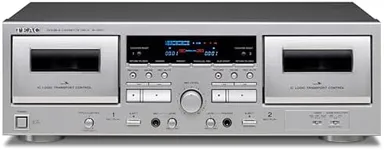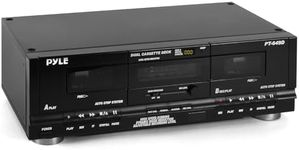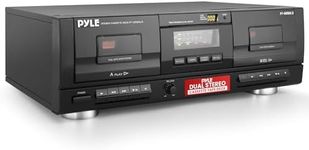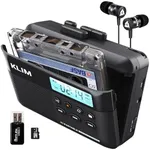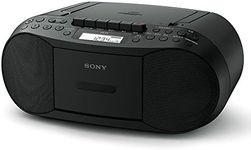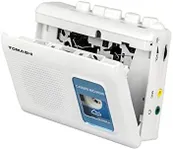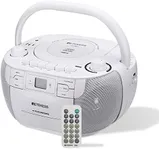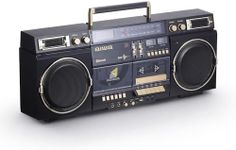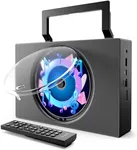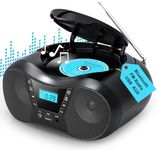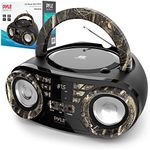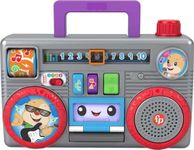Buying Guide for the Best Cassette Tape Deck
Choosing the right cassette tape deck can be a rewarding experience, especially if you are a music enthusiast or someone who appreciates the nostalgic charm of analog audio. To make an informed decision, it's important to understand the key specifications and features that can affect the performance and usability of a cassette tape deck. By considering these factors, you can find a model that best suits your needs and preferences.Playback QualityPlayback quality refers to the sound fidelity and clarity that the cassette tape deck can produce. This is important because it directly affects your listening experience. High-quality playback ensures that you hear the music as it was intended, with minimal distortion and noise. To navigate this spec, look for decks with high signal-to-noise ratios (SNR) and low wow and flutter values. If you are an audiophile or someone who values high-fidelity sound, prioritize models with superior playback quality.
Recording CapabilityRecording capability is the ability of the cassette tape deck to record audio onto blank tapes. This is important if you plan to create your own mixtapes or record from other audio sources. Some decks offer advanced features like auto-reverse recording and multiple recording speeds. If you need a deck for recording purposes, look for models with high-quality recording heads and noise reduction features to ensure clear and accurate recordings.
Noise ReductionNoise reduction refers to the technology used to minimize background hiss and other unwanted noise during playback and recording. This is important for achieving a cleaner and more enjoyable listening experience. Common noise reduction systems include Dolby B, C, and S. If you are sensitive to background noise or want the best possible sound quality, choose a deck with advanced noise reduction capabilities.
Auto-ReverseAuto-reverse is a feature that allows the cassette tape deck to automatically switch the direction of tape playback or recording without needing to manually flip the tape. This is important for convenience and uninterrupted listening or recording. There are single-direction and bi-directional auto-reverse systems. If you prefer continuous playback or recording, look for a deck with a reliable auto-reverse function.
Build QualityBuild quality refers to the overall construction and durability of the cassette tape deck. This is important because a well-built deck is likely to last longer and perform more reliably. Look for models with sturdy materials, solid construction, and reputable brand names. If you plan to use the deck frequently or in a professional setting, prioritize models with high build quality to ensure longevity and consistent performance.
Connectivity OptionsConnectivity options refer to the various ways you can connect the cassette tape deck to other audio equipment, such as amplifiers, speakers, or digital devices. This is important for integrating the deck into your existing audio setup. Common connectivity options include RCA outputs, headphone jacks, and USB ports. If you want flexibility in how you use the deck, choose a model with multiple and versatile connectivity options.
Ease of UseEase of use refers to how user-friendly the cassette tape deck is, including the layout of controls, display readability, and overall interface. This is important for ensuring a smooth and enjoyable user experience. Look for decks with intuitive controls, clear displays, and helpful features like remote control or programmable functions. If you are new to using cassette tape decks or prefer a hassle-free experience, prioritize models that are easy to operate.

